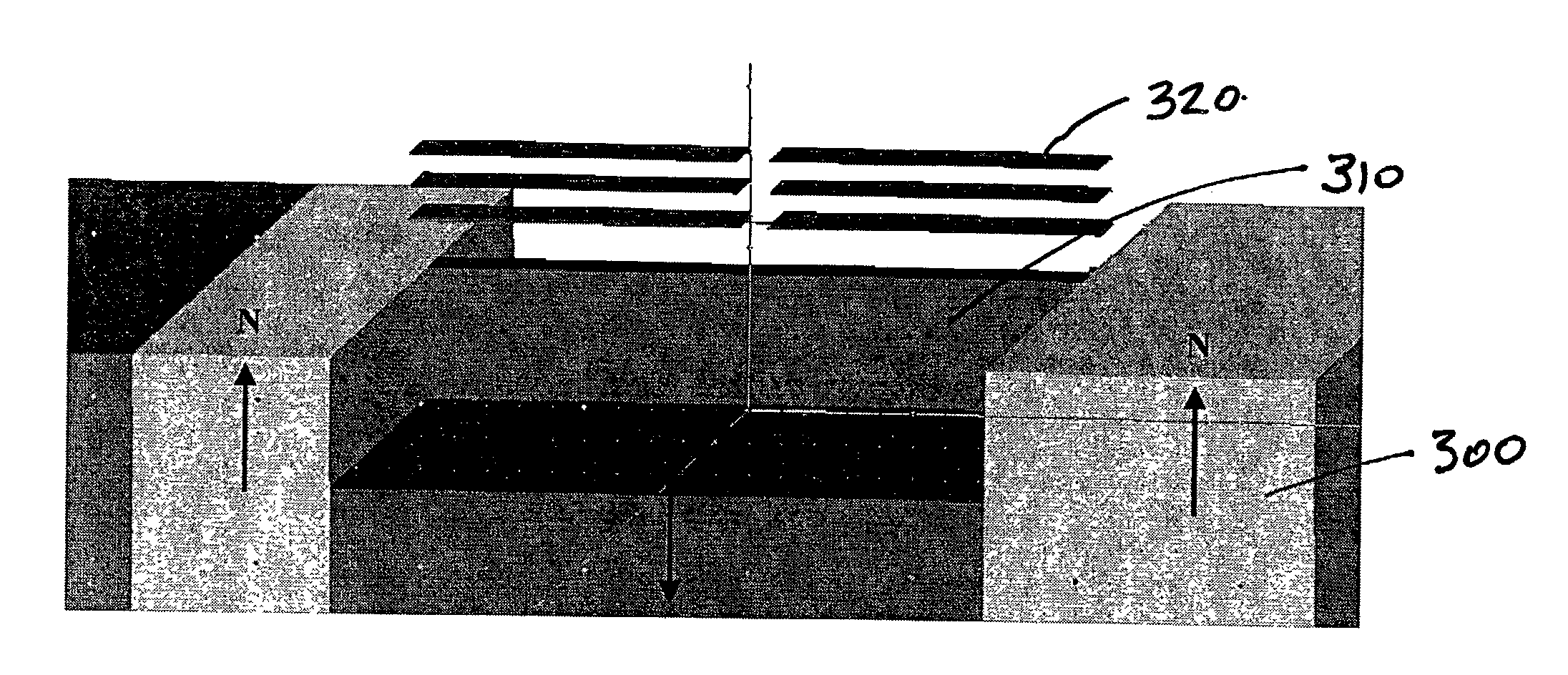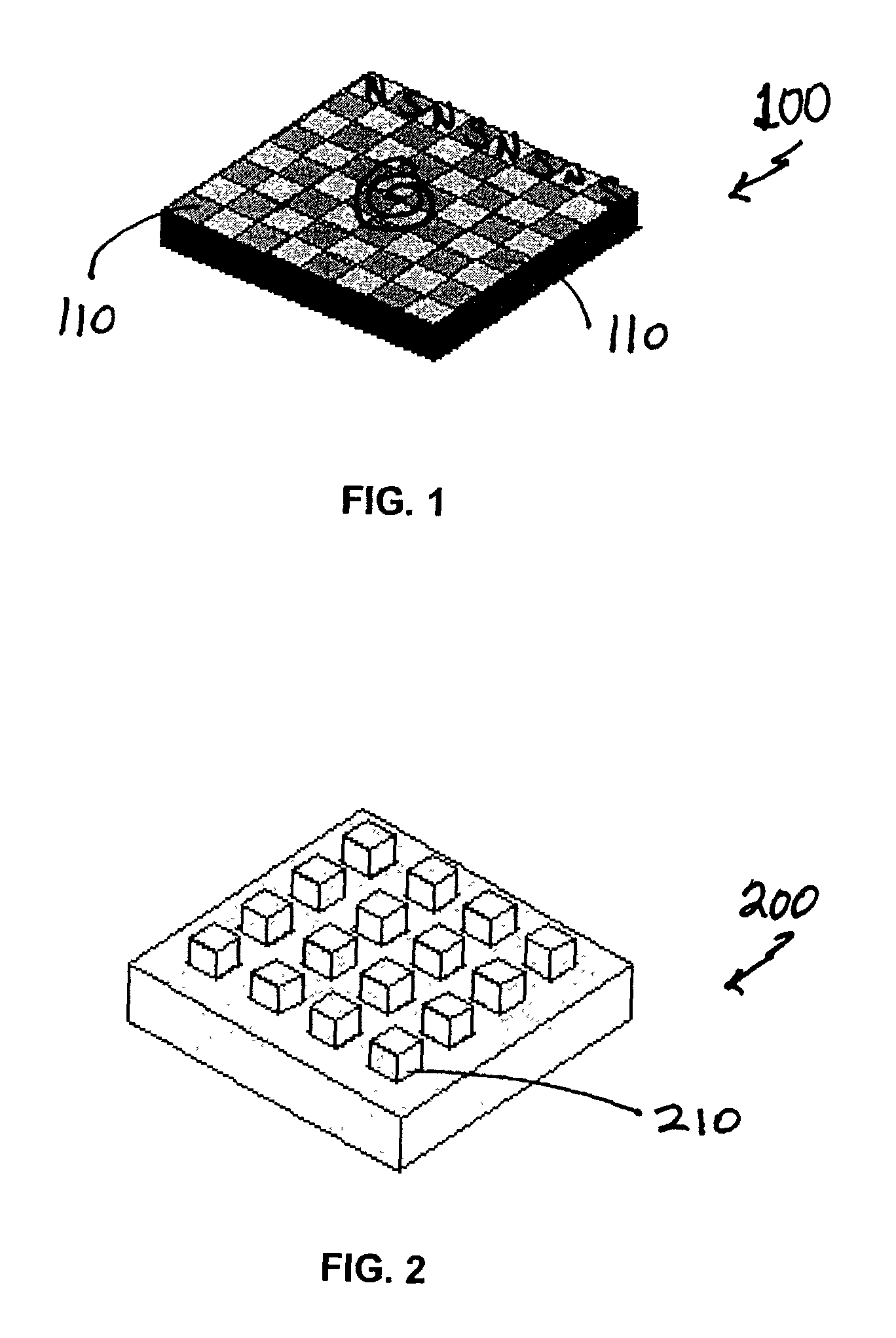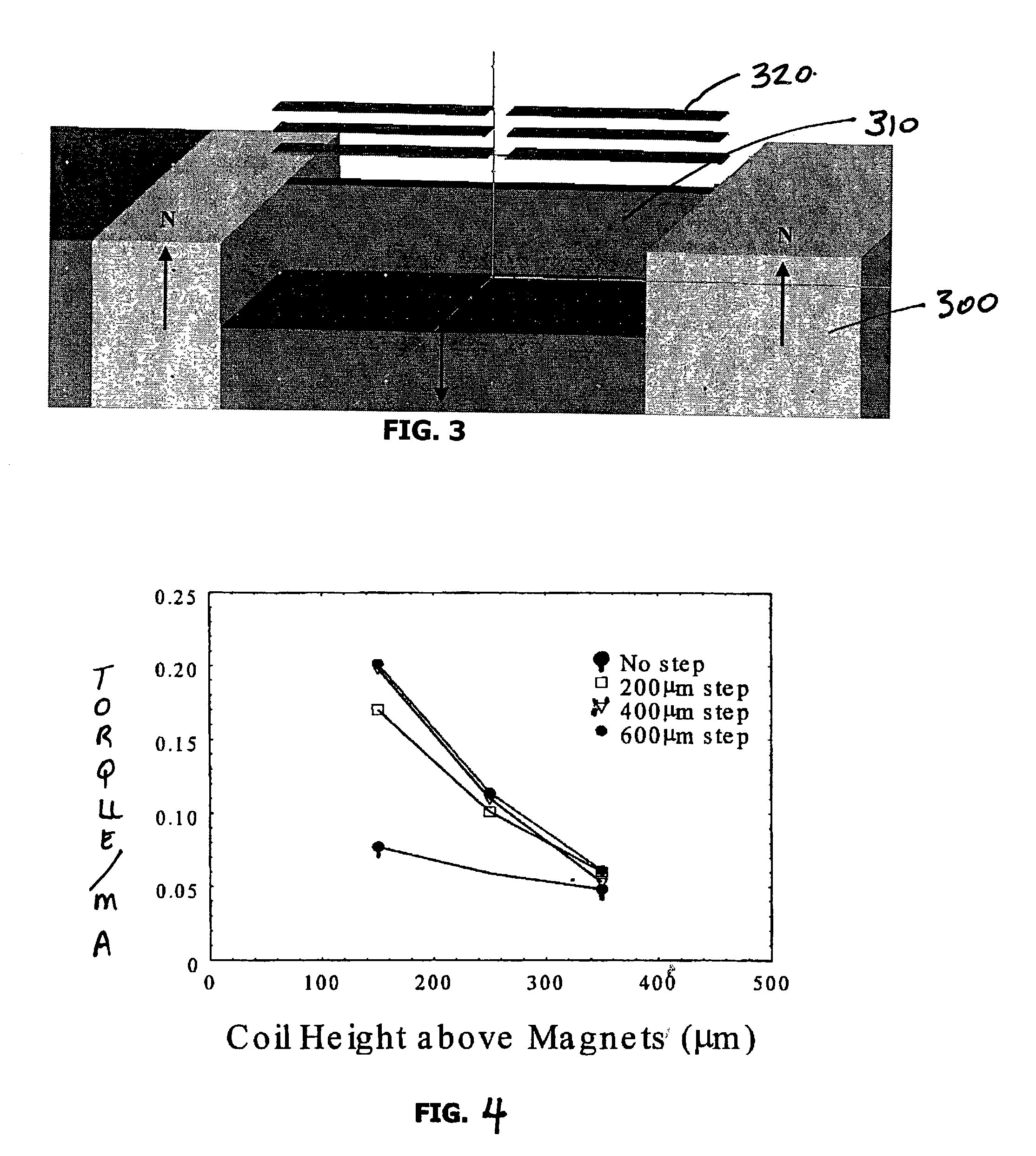Apparatus, device and method for generating magnetic field gradient
a magnetic field gradient and gradient technology, applied in the field of magnetic fields, can solve the problems of loss of most of the magnetization, no known effective method for manufacturing a magnet device with corresponding dimensional precision, and inability to avoid the debris of magnetic particles, and achieve high magnetic field gradient
- Summary
- Abstract
- Description
- Claims
- Application Information
AI Technical Summary
Benefits of technology
Problems solved by technology
Method used
Image
Examples
Embodiment Construction
[0063]Reference will now be made in detail to the present preferred embodiments of the invention, examples of which are illustrated in the accompanying drawings. Wherever possible, the same reference numbers will be used throughout the drawings to refer to the same or like parts.
[0064]Referring now to FIG. 1, a non-monolithic structure including individual magnets 110 assembled into a magnet array 100 is shown. The different shades in the arrangement represent different magnetic polarity, either north (pointing up out of the plane of the array) or south (pointing down out of the plane of the array). Hence, this structure may be referred to as the “checkerboard” structure. Due to alternating N / S polarity of the checkerboard magnets, the field above the magnets has a rapid spatial variation. This high field gradient is useful in actuating certain classes of electromagnetic actuators.
[0065]The force F on a magnetic dipole (m) in a field gradient is given by the equation:
F=∇({overscore ...
PUM
 Login to View More
Login to View More Abstract
Description
Claims
Application Information
 Login to View More
Login to View More - R&D
- Intellectual Property
- Life Sciences
- Materials
- Tech Scout
- Unparalleled Data Quality
- Higher Quality Content
- 60% Fewer Hallucinations
Browse by: Latest US Patents, China's latest patents, Technical Efficacy Thesaurus, Application Domain, Technology Topic, Popular Technical Reports.
© 2025 PatSnap. All rights reserved.Legal|Privacy policy|Modern Slavery Act Transparency Statement|Sitemap|About US| Contact US: help@patsnap.com



